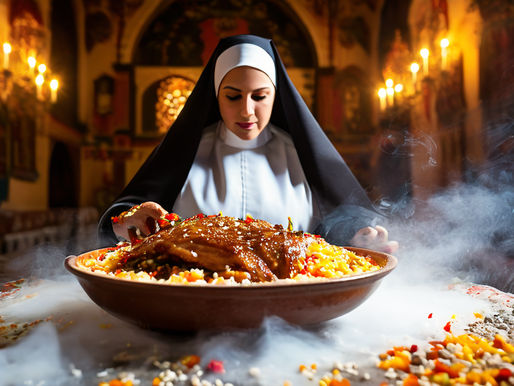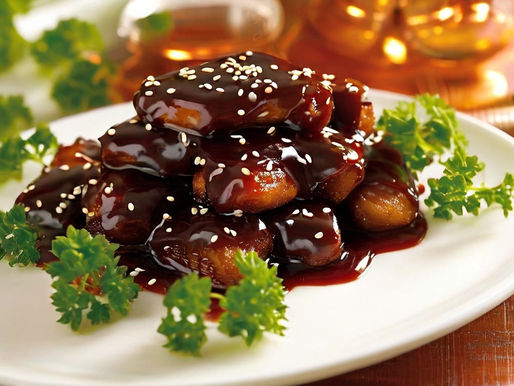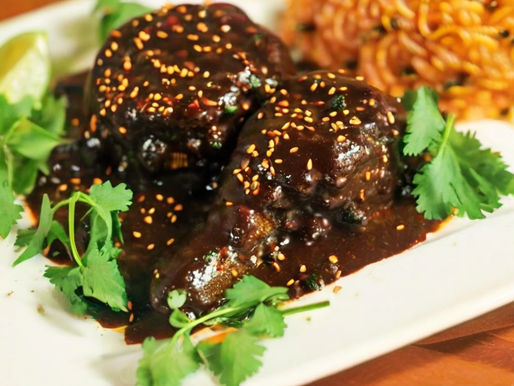Just in time for Cinco de Mayo, let’s probe into the rich history and cultural significance of the official dish associated with this Mexican celebration: mole poblano. This flavorful and complex sauce holds a special place in the hearts and traditions of the people of Puebla, where the Battle of Puebla took place on May 5, 1862. While many may think of Cinco de Mayo as a day of Mexican independence, it actually commemorates a pivotal military victory over the French, with mole poblano being an integral part of the celebratory cuisine.
The Origins of Mole Poblano
The Cinco De Mayo Legend of Mole Poblano
One of the most beloved and iconic dishes in Mexican cuisine, mole poblano, has a rich history that dates back centuries. Legend has it that in the 1600s, nuns in a Puebla convent created the multi-nuanced sauce in anticipation of a visit by a Spanish dignitary. This sauce, now known as mole poblano, quickly became a favorite in Puebla and beyond.

The Confluence of Indigenous and Spanish Influences
An intriguing aspect of mole poblano is the unique blend of indigenous and Spanish influences that come together to create this complex sauce. Ancho, mulato, and pasilla chiles are blended with tomatoes, onions, garlic, almonds, raisins, and Mexican chocolate, creating a harmonious fusion of flavors that symbolizes the cultural diversity of Mexico.
Puebla’s Mesón Sacristia de Compañía chef, Alonso Hernández, shares the secrets behind the making of mole poblano, highlighting the traditional ingredients and techniques that have been passed down through generations.
The Role of Puebla in the Creation of Mole Poblano
Poblano Cuisine: Mole poblano holds a special significance in Puebla, where it is considered the “jewel of Puebla food.” The dish is a symbol of regional pride and is often served at celebratory events such as weddings and baptisms. The city’s connection to mole poblano runs deep, making it an integral part of Puebla’s culinary heritage.
The Origins: The creation of mole poblano is deeply rooted in the history of Puebla, with the dish believed to have been invented by nuns in a Puebla convent. This rich and flavorful sauce has become synonymous with the city and is a testament to the unique culinary traditions that have flourished in Puebla throughout the years.
The Ingredients of Mole Poblano
Understanding the Diversity of Chiles
Unlike other Mexican dishes, mole poblano relies on a unique combination of chiles to create its signature flavor profile. The trio of mulato, ancho, and pasilla chiles not only add heat but also depth and complexity to the sauce. These chiles are crucial to achieving the rich, smoky undertones that characterize authentic mole poblano.
The Use of Tomatoes and Aromatic Vegetables
The addition of roasted tomatoes, onion, and garlic in mole poblano serves as the foundational base of the sauce, imparting a robust and savory quality. This trio of aromatic vegetables not only adds flavor but also enhances the overall depth of the dish.
Diversity in ingredients plays a crucial role in the complexity of mole poblano. The various components, from the chiles to the tomatoes and aromatic vegetables, work harmoniously to create a symphony of flavors that make this dish a true Mexican culinary masterpiece.
The Sweet and the Savory
Pasilla chiles, combined with almonds, raisins, and Mexican chocolate, introduce a unique interplay of sweet and savory notes to mole poblano. The incorporation of both sweet and savory ingredients creates a balanced and nuanced taste that is both comforting and indulgent.
Plus, the secret ingredient of Maria biscuits or animal crackers adds a surprising textural element to the sauce, elevating the overall eating experience. The careful balance of flavors in mole poblano showcases the culinary expertise and artistry behind this iconic Mexican dish.
The Preparation of Mole Poblano
The Technique of Roasting Vegetables
Preparation of mole poblano involves several intricate steps to ensure the rich and complex flavors come together harmoniously. One crucial step is the technique of roasting the vegetables. Following the tradition of the nuns in the Puebla convent, roast tomatoes, onions, and garlic until they are brown and soft. This process not only enhances the natural sweetness of the vegetables but also imparts a smoky depth to the mole sauce.
The Art of Frying and Blending Chiles
After roasting the vegetables, the next step in creating the perfect mole poblano is the art of frying and blending chiles. An imperative component of the sauce, a combination of ancho, mulato, and pasilla chiles are fried in oil until crispy. This process unlocks the full flavor potential of the chiles, adding a spicy kick and earthy undertones to the sauce.
A harmonious blend of chiles and vegetables is the key to a successful mole poblano. The balance of heat, sweetness, and depth of flavor is achieved through skillful frying and blending techniques, resulting in a sauce that is both bold and nuanced.
The Crucial Step of Straining for Smoothness
One crucial step in perfecting the velvety texture of mole poblano is the method of straining the sauce. After blending the chiles and vegetables into a smooth puree, pass the mixture through a strainer to remove any remaining bits of skin or seeds. This painstaking process ensures that the sauce is silky smooth, allowing for a luxurious dining experience with every bite.
Straining the sauce may seem like a small detail, but it plays a significant role in the final texture and consistency of mole poblano. The extra effort put into this step results in a sauce that is not only visually appealing but also a delight to the palate.
The Cooking Process
The Integration of Ingredients
All the rich flavors of mole poblano come together through the careful integration of its key ingredients. The combination of ancho, mulato, and pasilla chiles with tomatoes, onions, garlic, almonds, raisins, and Mexican chocolate lays the foundation for this complex sauce. The addition of Maria biscuits or animal crackers provides a unique texture that enhances the overall experience of the dish.
Balancing Flavor Profiles
Profiles For instance, the blend of sweetness from the sugar, the savory notes from the roasted vegetables, and the hint of bitterness from the burnt tortilla creates a harmonious balance that is necessary to the authenticity of mole poblano. Each ingredient plays a crucial role in ensuring that the flavor profile is robust and well-rounded.
The Importance of Simmering and Taste Adjustment
Simmering This traditional dish requires patience and attention to detail, particularly when it comes to simmering the sauce to perfection. The slow cooking process allows the flavors to meld together, resulting in a rich and flavorful mole poblano. Taste adjustment is also crucial during this stage, as it ensures that the sauce has the right balance of sweet, savory, and spicy elements.
Cultural Significance and Celebratory Practices
Mole Poblano as a Festive Dish
Festive occasions in Mexico often call for a special dish that holds cultural significance, and when it comes to celebrating Cinco de Mayo, Mole Poblano takes the spotlight. Known as the “jewel of Puebla food,” this flavorful sauce has a deep connection to the Mexican city of Puebla, where the Battle of Puebla took place on May 5, 1862.
Cinco de Mayo Celebrations and Mole Poblano
One of the core aspects of Cinco de Mayo celebrations in Puebla, Mexico, is the indulgence in Mole Poblano. This rich and complex sauce, traditionally served at weddings and baptisms in Puebla, has become a symbol of regional pride. The Battle of Puebla on May 5, 1862, marked a significant victory for Mexican armed forces, further deepening the ties between Mole Poblano and the historical events of that day.
Furthermore, the connection between Cinco de Mayo and Mole Poblano extends beyond Puebla, as many Mexican communities across the globe partake in the celebration with this iconic dish. Whether it’s the traditional preparation with turkey or the modern twist with chicken, Mole Poblano remains a staple on Cinco de Mayo tables, honoring the resilience and heritage of Mexican culture.

Mole Poblano in Mexican Cuisine and Beyond
Mexican cuisine boasts a colorful tapestry of flavors and Mole Poblano stands out as a representation of that diversity. This chocolate-chile sauce, made with a blend of peppers, spices, and Mexican chocolate, has transcended borders to become a beloved dish worldwide. To this day, the traditional recipe for Mole Poblano continues to be passed down through generations, preserving the culinary legacy of Mexico.
Plus, Mole Poblano’s adaptability has led to intriguing variations in international kitchens, showcasing the versatility and allure of this iconic Mexican dish. Whether it’s being savored in a festive celebration or enjoyed as a comforting meal at home, Mole Poblano holds a special place in Mexican cuisine and beyond.
Serving and Presentation
Traditional Accompaniments to Mole Poblano
Keep in mind that serving mole poblano traditionally involves pairing it with certain accompaniments that enhance the flavors and textures of the dish. An authentic way to enjoy mole poblano is by serving it over pieces of tender chicken or turkey, topped with a sprinkle of sesame seeds for added crunch. These meats complement the rich and complex flavors of the mole sauce, creating a harmonious combination that represents the heart and soul of Mexican cuisine.
Modern Twists and Plating Techniques
Techniques in modern culinary arts have allowed for creative interpretations of traditional dishes like mole poblano. Chefs today often experiment with different plating techniques to elevate the visual appeal of the dish while maintaining its authentic flavors. For a modern twist, consider deconstructing the components of mole poblano and reassembling them in a visually striking manner on the plate. This innovative approach adds a touch of sophistication to the presentation without compromising the essence of this beloved Mexican dish.
To further enhance the aesthetic appeal, chefs may use small, intricate garnishes and artistic drizzles of mole sauce around the plate to create a visually stunning presentation that captivates both the eyes and the taste buds of diners.
Drink Pairings for the Perfect Celebration
Pairings between food and beverages play a crucial role in creating a well-rounded dining experience, especially when celebrating a special occasion like Cinco de Mayo with a dish as flavorful as mole poblano. For instance, traditional Mexican beverages such as horchata or agua de jamaica can complement the richness of the mole sauce with their refreshing and slightly sweet flavors. Additionally, a robust red wine or a dark beer with caramel notes can provide an excellent contrast to the complexity of the dish, creating a harmonious balance on the palate.
Regional Variations and Personal Interpretations
Mole Poblano Across Mexico
Not only is mole poblano a cherished dish in Puebla, the heart and soul of Mexican Cinco de Mayo festivities, but it is also celebrated and enjoyed across Mexico in various regional variations. Each region puts its own unique spin on this iconic dish, incorporating local ingredients and culinary traditions to create personalized interpretations of mole poblano.
Chef’s Takes and Culinary Creativity
Interpretations of mole poblano extend beyond regional variations to the creative minds of renowned chefs. Chefs like Alonso Hernández of Mesón Sacristia de Compañía in Puebla have reimagined traditional recipes, adding their own unique twists and culinary expertise to elevate the flavors of this classic dish.
For a culinary experience that goes beyond traditional recipes, chefs often experiment with different ingredients and techniques to create innovative versions of mole poblano that showcase their creativity and expertise in the kitchen.
Making Mole Poblano at Home
To recreate the magic of mole poblano in your own kitchen, consider taking a page from the playbook of skilled chefs like Alonso Hernández. By following a carefully crafted recipe and paying attention to the details, you can create a homemade version of this iconic dish that captures the essence of traditional Mexican cuisine.
Takes like roasting chiles, toasting spices, and blending ingredients to create a rich, flavorful sauce are key steps in mastering the art of making mole poblano at home. With time, patience, and a dash of culinary creativity, you can commence on a culinary journey that celebrates the cultural significance and delicious flavors of mole poblano.
Challenges and Controversies
The Misunderstandings of Cinco de Mayo
For many outside Mexico, Cinco de Mayo is often mistakenly thought to commemorate Mexican independence. However, it actually commemorates a significant military victory by Mexican armed forces over the French in the Battle of Puebla on May 5, 1862. This victory, although not decisive in the overall struggle against French occupation, holds important cultural significance in Mexico.
Authenticity and Adaptation of Mole Poblano Recipes
The history and origin of mole poblano, a sauce rooted in Puebla’s culinary tradition, are intertwined with the cultural celebrations of Cinco de Mayo. Over time, various adaptations of mole poblano recipes have emerged, reflecting regional tastes and preferences while still honoring the dish’s historical significance.
The evolution of mole poblano recipes, such as incorporating modern cooking techniques or experimenting with different ingredients, highlights the dynamic nature of culinary traditions. While staying true to the essence of the dish, chefs and home cooks continue to innovate and adapt mole poblano to suit contemporary palates.
The Future of Mole Poblano Traditions
With the ongoing evolution of Mexican cuisine and the increasing global popularity of mole poblano, the future of traditions surrounding this iconic dish remains bright. As chefs and food enthusiasts explore new ways to showcase the flavors and versatility of mole poblano, the dish continues to hold a special place in culinary celebrations, including Cinco de Mayo.
Any changes or adaptations to traditional mole poblano recipes are met with a balance of respect for culinary heritage and a spirit of innovation, ensuring that this beloved dish remains a symbol of cultural pride and culinary craftsmanship.
Here is a Basic and a More Complicated Recipe with links to their sources:
Basic Recipe from Food Republic
PREP TIME 15 minutes
COOK TIME 45 minutes
Ingredients
3 mulato chiles
3 ancho chiles (dried poblanos)
3 pasilla chiles
6 tomatoes
1 onion
2 garlic cloves
1/2 cup vegetable oil
1 small fist-sized piece Ibarra chocolate
1 corn tortilla
1 cup sugar
5 cups water
1 plantain
1 teaspoon salt
Directions
Remove stems and seeds from chiles
Roast tomatoes, onion and garlic until brown and soft.
Fry chiles in 1/4 cup of vegetable oil until crispy (when oil is hot, the process take seconds).
Boil roasted vegetables and chiles in 4 cups water in large pot until soft.
Combine all ingredients in batches in a blender and grind, then pass through a strainer.
In a separate pan, fry plantain until golden brown.
Put tortilla directly over flame and burn it.
Combine plantain and tortilla in blender with 1 cup of water and blend. Remove and set aside.
Fry the vegetable sauce in pan and let cook for few minutes. Return to pot.
Add the tortilla and plantain sauce to strained vegetable mixture in pot.
Add chocolate and sugar. Stir until smooth.
Salt to taste and let cook for 25 minutes.
To serve, pour mole over cooked chicken and top with sesame seeds.
Another more sensuous recipe that uses raisins and peanuts:
Ingredients and Overview
Chiles (chipotle, guajillo, and ancho)
Chicken broth
Dinner roll and corn tortilla
Tomatillos and tomatoes
Lard
Onion and garlic
Peanuts
Raisins
Spices (cumin seeds, dried thyme, allspice berries, whole cloves, and cinnamon sticks)
Dark chocolate
White sugar
Salt
How to Make Mole Sauce
Toast the chiles and put them in a blender.
Simmer the broth and pour it into the blender.
Toast the roll and tortilla, then transfer to the blender.
Allow the ingredients to soak in broth, then blend.
Cook the tomatoes and tomatillos, then transfer them to the blender.
Cook the onion, garlic, peanuts, raisins, and spices in lard, then transfer to the blender.
Blend until smooth and pour the mixture into a saucepan.
Stir in the remaining broth, chocolate, sugar, and salt. Simmer until thickened.
Ingredients
3 dried chipotle chiles, stemmed and seeded
2 dried guajillo chiles, stemmed and seeded
2 dried ancho chiles, stemmed and seeded
2 cups chicken broth
1 dinner roll, torn into pieces
2 corn tortillas, cut into 1-inch strips
5 tomatillos, cut in half crosswise
2 tomatoes, cut in half crosswise
1 tablespoon lard
1 onion, halved and thinly sliced
½ head garlic, peeled and sliced
⅓ cup chopped peanuts
¼ cup raisins
2 tablespoons cumin seeds
1 tablespoon dried thyme
6 whole allspice berries
5 whole cloves
3 cinnamon sticks
1 cup chicken broth
5 ounces dark chocolate, coarsely chopped
3 tablespoons white sugar
1 teaspoon salt
Directions
Gather all ingredients.
All ingredients gathered in various sized glass bowls
Toast chipotle, guajillo, and ancho chiles in a dry pan over medium heat, stirring constantly, until warm and aromatic, about 3 minutes. Transfer to a blender.
Chiles toasting in a skillet
Heat 2 cups chicken broth in a saucepan until it begins to simmer, about 5 minutes. Pour broth into the blender.
Broth warmed and poured into blender
Toast dinner roll pieces and tortilla strips in a dry pan over medium heat, stirring constantly, until lightly browned, about 3 minutes. Transfer to the blender with chicken broth and chiles.
Bread and tortilla pieces toasting in a pan
Allow chiles, toasted bread, and tortillas to soak, fully submerged, in the chicken broth until softened, about 10 minutes. Blend the mixture until smooth.
Mixtures blended together in a blender
Cook tomatillos and tomatoes in a dry skillet on medium-high heat until soft and blackened, 3 to 4 minutes per side. Place tomatoes in the blender with the chile puree.
Tomatoes placed in blender with chile mixture
Melt lard in a large skillet over medium heat. Stir in onion, garlic, peanuts, raisins, cumin seeds, thyme, allspice berries, cloves, and cinnamon sticks; cook and stir until onions are soft and golden, 5 to 8 minutes.
Ingredients cooking in a skillet
Remove the cinnamon sticks and other whole spices; add onion mixture to the blender with the chile-tomato mixture and blend until smooth.
Mixture added to blender with chile-tomato mixture
Pour chile puree into a large saucepan over medium heat. Stir in 1 cup chicken broth, chocolate, sugar, and salt. Bring mixture to a simmer; stir until chocolate is melted and sauce is thickened and slightly reduced, 10 to 15 minutes.
Final ingredients added to pot and and simmer until thickened
Enjoy!
Conclusion
Through the historical and cultural significance of the Battle of Puebla, Cinco de Mayo has become a day of celebration for Mexican heritage and pride. The association of mole poblano with Puebla and its beloved place in local celebrations further solidifies the dish as a symbol of tradition and unity. By understanding the origins of both the holiday and the dish, we can truly appreciate the depth of meaning behind celebrating Cinco de Mayo with a meal like mole poblano.
So, as you prepare for this year’s Cinco de Mayo festivities, consider delving into the rich history and flavors of mole poblano. By honoring the spirit of Puebla and the resilience of the Mexican people through the enjoyment of this iconic dish, you can truly partake in a celebration that goes beyond mere festivities and embraces the heart of Mexican culture.
…or, you could just do boring tacos, like everyone else…




